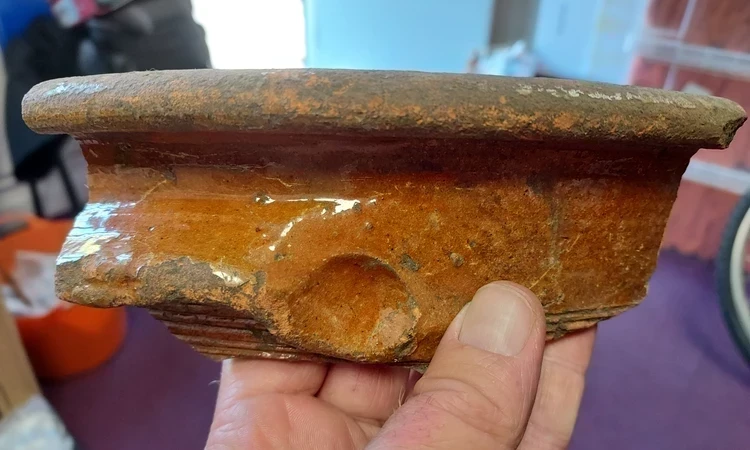
The Old Keeper's Cottage
Near Queen Elizabeth’s Oak in Greenwich Park, the remnants of a lost park building can just be seen.
All that remains today is a water trough, and a stone slab with a round metal fitting for a water pump. They once belonged to the Old Keeper’s Cottage, or Lodge, which stood in this part of the park until it was demolished in 1853. Let’s discover more about this remarkable site and how its mysteries were revealed by recent community archaeological digs.
What was the Old Keeper’s Cottage?
A building on the site of the Old Keeper’s Cottage appeared on a map of the park from 1676, surrounded by a picket fence and trees. So the cottage stood on this site for at least around 200 years, until it was demolished in 1853.
The enclosed area surrounding the cottage was initially quite small, but gradually extended to allow space to grow fruit and keep deer in a paddock. There were two conduit houses (underground water systems) within the grounds. A map from 1840 shows the cottage, conduit houses, ancient oak (probably Queen Elizabeth’s Oak), gardens and deer enclosure.

Who was the ‘Keeper’, and what did they do in Greenwich Park?
The person who lived here would have been employed as a ‘Keeper’ to look after Greenwich Park by a ‘Ranger’. The park Ranger was an honorary position granted by the monarch, and consequently often went to a member of the nobility or royal family. The Rangers of Greenwich Park included Queen Caroline (from 1805-1814), Princess Sophia Matilda, niece of George III (from 1815-1844) and George Hamilton-Gordon, 4th Earl of Aberdeen (from 1845-1860).
In the mid-1800s, Greenwich Park’s Keeper was Robert Eaglestone, who lived in the cottage with his wife, four children, brother-in-law and maid – so it would have been quite cramped!
The Old Keeper’s Cottage was demolished in 1853 and a new home called Keeper’s Lodge was built next to Blackheath Gate at the southern end of the park. It still stands today as a private residence and is now known as Blackheath Lodge.
Revealing the Old Keeper’s Cottage
Much of what we know about the Old Keeper’s Cottage and its fascinating history comes from recent archaeological excavations. Digs between 2014 and 2016 revealed the foundations of the cottage and identified the potential for future fieldwork.
The most recent dig at the site was delivered as part of Greenwich Park Revealed – a £12 million, four-year project part-funded by the National Lottery Heritage Fund and National Lottery Community Fund to reveal, restore, protect and share the unique heritage of Greenwich Park.

Greenwich Park’s Community Archaeologist began a two-week community dig on the site in 2022 with volunteers and school groups. The aim of the project was to find out more about the foundations, or ‘footings’, of the other outbuildings at the site. The foundations had been confirmed by running geophysical surveys which measure the electrical conductivity of the ground, producing results that could be tested through archaeological excavations.
During the first week, the team found three of the four buildings they were looking for and recovered evidence of occupation and activity. Pottery fragments the team discovered indicated the site had been occupied for at least 300-400 years. The fourth building was found in the second week of the dig, and the team learned more about when the outbuildings were constructed – probably in the late 1600s or early 1700s.
Explore some of the finds from this community archaeology dig in the images below - they include fragments of china and a button from a White Star Line uniform!




Related Articles
-
 Read
ReadThen and now: celebrating Greenwich Park Revealed
Check out our gallery of then and now photos to see the how Greenwich Park Revealed has restored the park's unique 17th-century landscape.
-
 Read
ReadA dig with a grand view
Over the past few months, the archaeology team have been working on the Grand Ascent, the slope below the General Wolfe statue.
-
 Read
ReadThe Roman Temple
Between around AD 100-400, an ancient Roman temple once stood in an area close to where the bandstand is located today.

